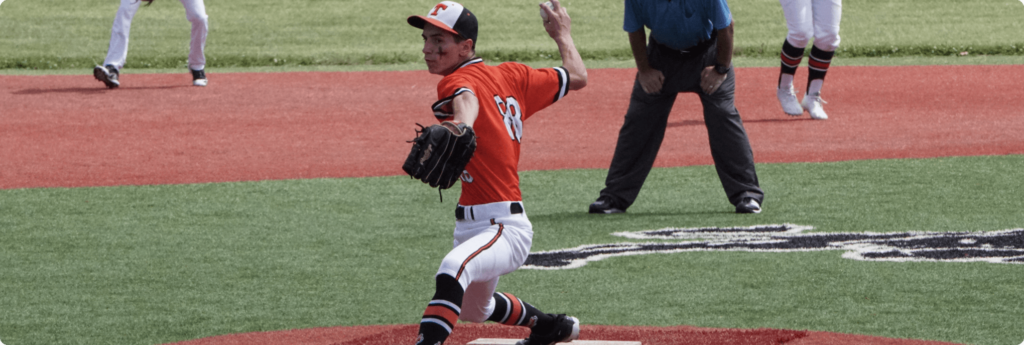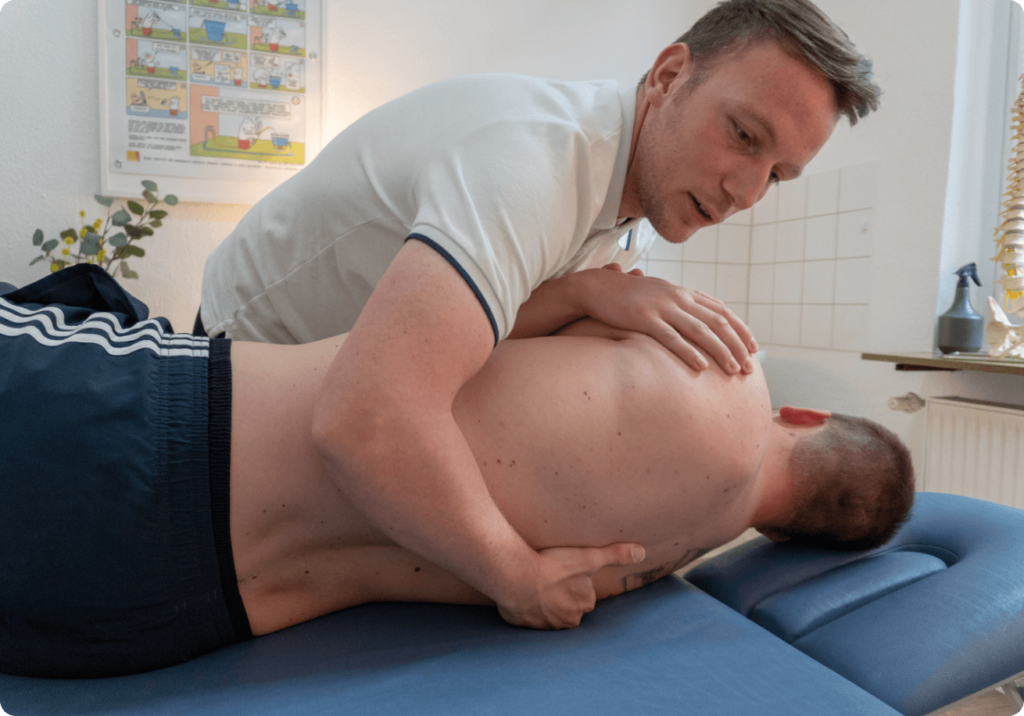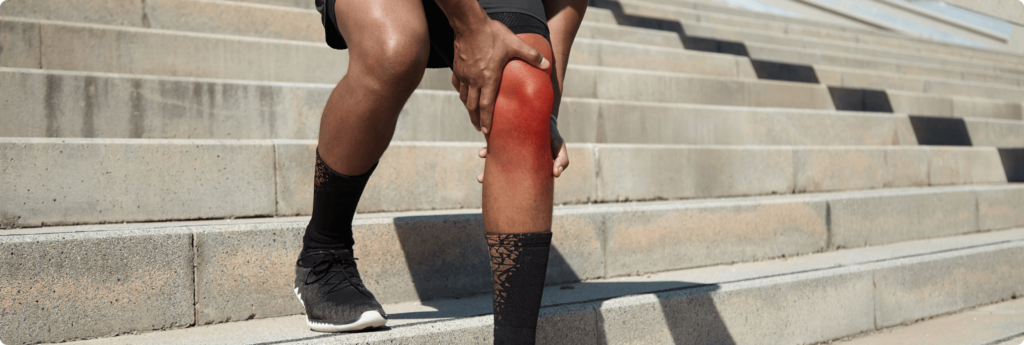Home | Experts in Applied Functional Science
Have you ever felt like a health care provider was just focusing on the part of your body that hurts and not really looking at the whole “you” as a total package? Have you had a sense that compensation from an old injury or maybe just a history of tightness or weakness elsewhere were catching up to you but it was being ignored because that part didn’t hurt?
Some might even remember that old cartoon…”the foot bone’s connected to the leg bone…” from back in the day. It’s so true!
And, have you ever wondered why the idea of “overuse” is thrown around so much but when you think about it your pain-free side went through essentially the same volume and load of activity as the painful side?

STOP! Chew on that for a moment. Think about the runner who reciprocates each step…left then right, left then right…etc. When they get to the 3 mile mark they start noticing pain at the outside of their right knee. They see a doctor or a PT or talk to their personal trainer – each tells them, like predictable clockwork, that it’s an “overuse” problem. In one way they’re right. The tissue got more load than it could take. But that’s sort of obvious isn’t it? The REAL QUESTION that needs answering is “WHY did THAT tissue start hurting?” You see, the left knee took essentially the same number of landings and take-offs and it isn’t barking. Aren’t you curious why the right hurts now and the left doesn’t? To simply chalk it up to “overuse” means a surefire dose of prescribed NSAID’s, rest, ice, generic exercises that probably will include stretching the tissue that hurts…in this case, probably the iliotibial band on the side of the thigh and knee, and some strengthening.
Protocols. Common patterns – but unfortunately all too often assumed by health care providers and patients alike. Why would you stretch a tissue because it hurts? Are you even sure it’s too tight? Did they test it during the evaluation? And, importantly, was that tissue checked in it’s authentic position and demand of function…or was it just checked lying on a table where it’s convenient to test for us providers but isn’t really even showing us if it can do what it needs to do! (ie, that’d be standing, stride stanced as if in heel strike and early foot flattening phase of a walk or run, seeing if the pelvis can drop down on the opposite side some, what that timing and amount is like, and are the muscles able to decelerate it and then return the pelvis to a level position?)
There are so many more examples. Really a nearly infinite amount…where “traditional” testing often checks a patient’s body in convenient positions for the provider but too often lacks the authenticity to how that joint or tissue has to perform in life.

Why would I test a professional baseball pitcher by having him throw a football, or a beach volleyball hitter demonstrate her overhead serve in tennis? And those are pretty close motions and they’re still not close enough. Function demands that we be “authentic” so that the testing (or the exercise being done) resonate with the body’s memory and history of like movements and demands. For example, the fact that someone can sit on a bench and kick their leg up against a huge load is often deemed “quad strength” but think about it. How often in your real life does your Quad muscle have to kick hard with a heavy load at your ankle? (Even worse…sitting down, hands tightly grasping handles for extra support…etc).
There’s a disconnect too often between the testing and exercises done in physical therapy, and in fitness centers, and real world human movement demands.
Ultimately when patients come for help they’re generally wanting two things – to relieve their pain and to return to normal doing the things they love and miss doing. That’s where PT’s are supposed to come in right? We’re supposed to be experts in pain relief and in function. In understanding the body. The problem is though that PT school does an awesome job of teaching the foundations…the essentials necessary to understand function – anatomy, physiology, biomechanics, orthopedics. But true authentic function rarely is taught even in today’s programs.
Did you know that many areas of specialization for all sorts of health care professionals come AFTER your basic university/college formal training. Mentorships, fellowships, continuing education courses…there’s all sorts of ways to learn more and grow as a professional. Simply having a degree and a license is a starting point. Sure, experience can be incredibly important and meaningful but only if you’ve added key elements to your knowledge base and learned new skills along the way that you’re working at getting better with. THEN, experience can matter.

Applied Functional Science ®, a term coined by the Gray Institute in Michigan, led by Gary Gray – who the American Physical Therapy Association once called “The Father of Function” during an achievement award they bestowed on him, is a key foundational piece to understanding human function that is missing from the PT programs everyone is graduating from. Sure, most PT’s are pretty expert in isolated, single joint or muscle performance. The challenge is that in real-life there is no time when your body parts get to function in isolation, independent from their “nextdoor neighbors” and even influenced by other more distant body parts that are “down the street” or “around the block” so to speak.
Our bodies function within what’s called a “kinetic chain” – meaning we are connected and one body part integrally effects the other. You can’t be a knee expert without fully knowing foot function (your ankle bones include the tibia and fibula, which happen to “be” the bottom part of your knee joint!)…or hip function (your hip’s bottom bone is the femur, which is the top bone making up your knee)…and so on and so on. Too often doctors and therapists alike have come from training that views each body part in isolation and/or from a perspective of a cadaver on a lab table.
That’s just not how we function! Our muscles cross multiple joints. The fiber orientations and attachments often reveal complex multidirectional influences that are often neglected in traditional texts and classes. For those reasons and more, traditional testing methods and exercise designs often disregard key actions and roles our various joints and muscles play in our day to day activities, whether that be home life, work life, fitness, recreation and hobbies, or sports.
So many of the patients we see at Peak who were deemed “failed PT” or “failed conservative care” cases actually had normal, standard…really otherwise acceptable and appropriate, “traditional” treatments done. But too often the focus was solely or proportionally too high at the symptom area, working mainly the joint or tissue that was diagnosed, and not addressing (or even looking for) the key contributors above and below where the pain was occurring. Other times very astute practitioners did attempt to address some of those areas, but ended up using cookbook style protocol-like approaches without actually testing to see if an issue existed, relying on patterns they were taught at a course or read somewhere but never confirmed for that patient. Sure, patterns often do exist in human function and performance, and injury. But, every patient IS UNIQUE. You are unique. Excellent testing is the foundation for successful therapy outcomes! Other times the exercises a provider chose did, in fact, stimulate the right muscle but were done in ways that really aren’t authentic to how a body part functions in real life. No surprise then that once “real-life” demands occurred their exercise induced training effect was never really there to make the desired difference. Remember…even something pretty darn close – like throwing a baseball…is still different enough to be different from throwing a football or hitting a volleyball, even though the motions and muscle actions are very similar!
All of our providers are at least Certification level trained in AFS and several are Fellowship trained. That means that any provider you see at Peak Performance has an understanding of functional biomechanics beyond the limited training all PT’s go through in school. It provides us a unique starting point in how we assess pain and performance, as well as develop exercise programs to help safely, comfortably, and effectively restore motion and enhance key qualities like strength, endurance, balance, and acceleration/deceleration (explosive power).

One key is appreciating that our bodies function in 3D…that is 3 dimensions. Physically speaking we move in 3 planes of motion…Sagittal (forward and backward or up/down directions)….Frontal (side to side directions)…and Transverse (twisting or rotating directions). Understanding and applying that is fundamental to what we do at Peak Performance when evaluating patients and designing and progressing exercises. Authentic biomechanics must be a consideration in all we do. But without special extra training most physical therapists unfortunately haven’t been taught the depth of functional biomechanics needed to truly problem solve a patient’s issues and navigate the sometimes difficult waters of inability/disability and symptoms they’ve come in for…all while wanting to be built up back to their former selves or beyond!
One example could be a knee injury. Yeah, the knee clearly is a Sagittal plane dominant joint. But rehab can’t stop with just focusing on the major motion that goes on at the knee. So many knee injuries (and care for post-operative conditions) have key Frontal and Transverse plane components that must be addressed to get at a key underlying cause or controlled to protect healing. Side to side and twisting things are often a complaint patients have but the vast majority of “knee” exercises given soley focus on the quads and the hamstrings in forward-backward or up and down (ie. squat type) sort of motions. And, for the knee, that control of Frontal and Transverse plane actions really comes from the hip and ankle above and below…….
But the other key aspect to AFS® is a 3D understanding of caring for people. We recognize that each patient we see needs to be encouraged and fed in their Mind, Body, and Spirit. By that we mean people have to think thru things, learn exercises, understand certain concepts….using their mind. Certainly the body’s recovery must physically be addressed – for us that means a foundation of 3D movement principles and appreciating the local injured or painful tissue and how it’s “next door neighbors” throughout the body are working. And then there’s the other part of us…the part that needs to have hope, that needs encouragement, comforting…hope – our spirit. At Peak PT we are conscious and purposeful about addressing the totality of who you are and why you’ve had to come see us. No easy task but key to appreciating the 3D of who you are!
Monday:
Tuesday:
7:00am – 7:00pm
Wednesday:
Thursday:
7:00am – 7:00pm
Friday:
7:00am – 4:00pm
CLOSED
Powered by LSEO